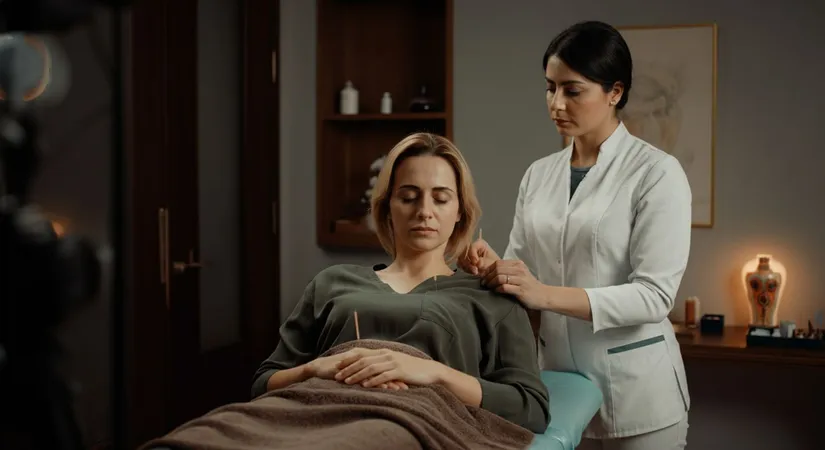Acupuncture: Transforming Health with Ancient Techniques
Explore the transformative power of acupuncture needles in traditional medicine and modern healing approaches.
Understanding the Role of Acupuncture Needles in Traditional Medicine
Acupuncture is one of the oldest healing practices deeply rooted in Chinese medicine. Its origins trace back over 2,000 years, making it an integral part of traditional medicine systems that view health holistically. The practice involves inserting fine acupuncture needles into specific points on the body, known as acupoints, to balance the body's energy flow or 'Qi'. This method is believed to enhance overall well-being and treat various ailments by activating the body's natural healing mechanisms.
Historical Context and Evolution
The history of acupuncture is rich and complex, evolving from a critical practice in ancient Chinese traditions to a globally recognized therapeutic approach. Initially, acupuncture was based on the doctrines of Taoism and the belief in a vital force flowing through the body. Over centuries, this practice evolved, integrating scientific insights and techniques from various healing arts to form the contemporary treatment known today.
How Acupuncture Needles Stimulate Pressure Points for Healing
The technique of acupuncture is centered on the stimulation of specific pressure points. These are strategic points mapped across the body's meridian system, which are believed to correspond to different organs and systems. By using needles to apply pressure to these points, acupuncturists aim to unblock stagnated energy, promote blood circulation, and support the healing process.
Mechanism of Action
When acupuncture needles penetrate the skin, they trigger the body's healing response. This includes the release of endorphins, which are natural pain-relieving compounds, and the enhancement of blood flow to affected areas. Studies suggest that this process can alter brain chemistry, impacting neurotransmitters that regulate pain and mood, thereby providing relief from various conditions such as chronic pain, migraines, and even anxiety.
Exploring the Different Types of Acupuncture Needles
Acupuncturists use a range of needle types, each suited to different therapeutic purposes. The selection of needle type can depend on the treatment area, the patient's sensitivity, and the specific health condition being addressed. These needles vary in length, gauge, and material.
Material and Design Differences
Commonly, acupuncture needles are made from stainless steel and differ in flexibility and thickness. Longer needles might be used for parts of the body with more flesh, whereas finer needles are suited for more delicate areas like the face or ears. The design and material of acupuncture needles play a crucial role in the effectiveness of the treatment, ensuring minimal discomfort and maximum therapeutic benefit.
Safety and Hygiene Practices for Acupuncture Needle Use
Ensuring safety and maintaining hygiene standards in acupuncture is vital to prevent infections and other complications. Acupuncturists are required to follow strict protocols to ensure that the procedure is safe and hygienic for patients.
Sterility and Usage Guidelines
All acupuncture needles must be single-use and should be disposed of immediately after treatment to prevent infection. Practitioners must adhere to stringent sterilization procedures, often using autoclaves and sterilizing solutions to ensure all tools and materials are free from any contaminants. This rigor in sterile practice helps uphold the safety and efficacy of acupuncture as a trusted healing modality.
The Science Behind Acupuncture Needles and Pain Relief
Acupuncture's efficacy, particularly in pain relief, is supported by numerous scientific studies. Research indicates that the insertion of acupuncture needles can stimulate the central nervous system, releasing chemicals that either alter the experience of pain or trigger physiological changes supporting healing.
Neurotransmitter Modulation
Scientific analysis demonstrates that acupuncture may modulate neurochemical pathways in the brain. It affects neurotransmitters such as serotonin and dopamine, which are involved in regulating mood and pain sensitivity. This modulation can be particularly beneficial in treating chronic pain disorders, as these conditions are often linked to neurotransmitter imbalances.
Choosing the Right Acupuncturist: What to Look For
Finding a qualified acupuncturist is crucial to ensure the safety and success of treatment. Qualifications, certifications, and experience are essential factors to consider when selecting a practitioner.
Credentials and Experience
An experienced acupuncturist should hold certification from a recognized body, ensuring they possess the necessary skills and knowledge. They should also have relevant experience in treating specific conditions you are seeking help for. Always inquire about their training, success rates, and patient testimonials to gauge their proficiency. Additionally, the practitioner should have a clean, inviting environment and maintain open communication regarding procedures and expected outcomes.
